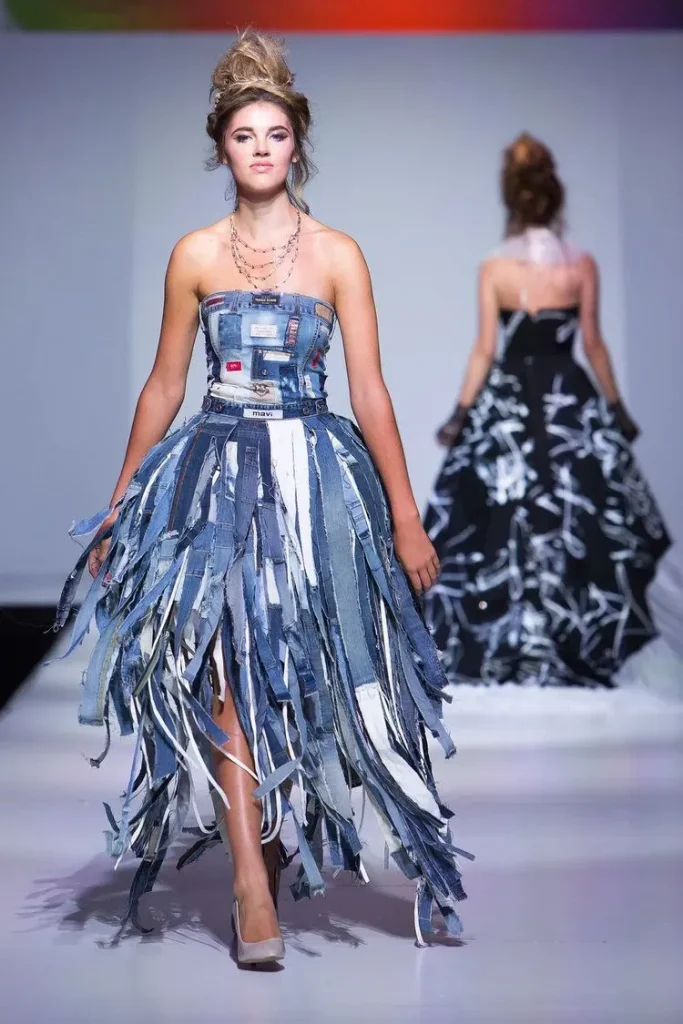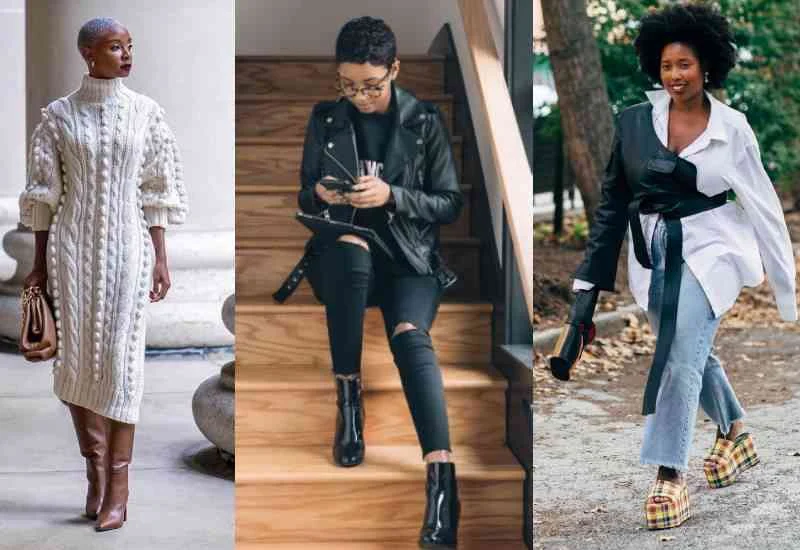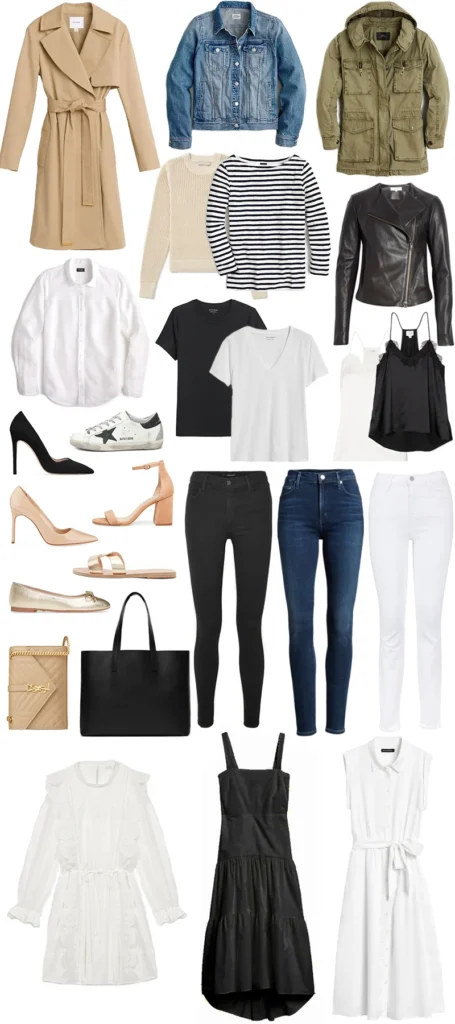Upcycling fashion is revolutionizing the way we think about our wardrobes, transforming discarded clothing and textiles into unique, stylish pieces. This innovative approach not only champions sustainable fashion but also addresses the alarming waste generated by the fast fashion industry. By reimagining and repairing clothes, we are not just reducing our environmental footprint; we are participating in a global fashion revolution. Eco-friendly clothing created through upcycling provides a creative outlet that empowers individuals to express themselves while being mindful of their choices. With an increasing number of designers and brands focusing on upcycled outfits, this trend is proving that fashion can be both stylish and kind to the planet.
The concept of upcycling in the realm of apparel is gaining traction, reflecting a broader shift towards sustainable attire and responsible consumerism. This movement aims to breathe new life into unwanted garments, encouraging repair and creative reuse as pivotal elements of modern fashion culture. By embracing this eco-conscious approach, individuals can contribute to a fashion renaissance that prioritizes ethical practices and reduces waste. As the industry evolves, alternatives like reconstructed clothing and vintage revitalization stand out as compelling ways to cultivate personal style without negatively impacting the environment. Ultimately, this growing trend highlights the importance of craftsmanship and innovation in fashion, redefining how we engage with our clothing.
The Rise of Upcycling Fashion: A Sustainable Solution
Upcycling fashion has emerged as a pioneering solution to combat the adverse effects of fast fashion. By transforming discarded materials or garments into new creations, upcycling not only reduces waste but also promotes a more sustainable way of dressing. As consumers become more eco-conscious, the appeal of upcycled outfits continues to grow, championing creativity and individuality in style. This practice encourages a shift from the ‘wear-once’ mentality towards a more thoughtful approach to clothing, where each piece tells a unique story and holds value beyond the initial purchase.
Many brands have embraced this movement, realizing that sustainability can be chic. Designers like Ahluwalia and Marine Serre showcase that high fashion can be synonymous with eco-friendly clothing. Their innovative designs made from deadstock fabrics and deconstructed luxury items highlight how upcycling fashion is not just a trend but a vital component of a fashion revolution. Brands like these inspire consumers to consider the environmental impact of their wardrobe choices, promoting a culture of responsible consumption and sustainable fashion practices.
Repairing Clothes: Revolutionizing Our Fashion Habits
In today’s consumer-driven society, the art of repairing clothes is often overlooked. Repairing has been rediscovered as a revolutionary act, particularly in light of initiatives like Fashion Revolution’s Mend in Public Day. This movement aims to encourage individuals to mend, customize, and repurpose their clothing rather than discarding. Not only does this practice help to minimize waste, but it also cultivates skills that have been lost in the fast-paced world of fashion. By providing community classes, Fashion Revolution is nurturing a culture that values craftsmanship and longevity in clothing.
Moreover, repair initiatives foster a sense of community and collaboration. Attending workshops and sharing tips on sewing and mending not only educates participants but also builds connections among like-minded individuals committed to sustainable fashion. As people learn how to repair rips, replace buttons, and rework garments, they engage in meaningful interactions that foster a sense of ownership over their clothing. This movement emboldens everyone to reclaim their agency in a fashion landscape dominated by disposability, thus promoting a lifestyles characterized by sustainability.
The Role of Community in Sustainable Fashion
Community plays a pivotal role in the advancement of sustainable fashion movements. Initiatives such as Mend in Public Day serve as catalysts for change, bringing together individuals eager to learn and share their expertise. By participating in community-driven workshops, attendees not only acquire valuable sewing skills but also join forces in a collective effort to reduce fashion waste. This grassroots approach empowers people to take charge of their consumption, creating a ripple effect that influences others to embrace eco-friendly clothing practices.
Furthermore, communities can amplify the impact of sustainable fashion through local events, pop-up shops, and swap meets. Such activities promote the sharing and trading of clothes, minimizing the need to buy new garments while fostering a sense of camaraderie. This collaborative spirit encourages individuals to think critically about their fashion choices while showcasing the creativity that arises from community interactions. Together, they champion the idea that sustainable fashion is achievable and desirable, ultimately diminishing the reliance on fast fashion.
Upcycled Outfits: A Stylish Alternative
Upcycled outfits are transforming the fashion landscape, offering a stylish alternative to conventional clothing choices. With the recent popularity of unique, one-of-a-kind pieces derived from previously discarded materials, consumers are increasingly attracted to the concept of wearing something that stands out and tells a story. Upcycling allows for creativity to flourish, giving designers the freedom to experiment with various textures, patterns, and colors that wouldn’t typically be available in mainstream retail. In essence, upcycled outfits redefine fashion by prioritizing individuality and creativity over mass production.
The success of brands like Pikol Clothing and Spilt Milk illustrates the appeal of upcycling in fashion. By leveraging vintage textiles and transforming them into trendy garments, these brands not only champion sustainability but also attract fashion-forward individuals who appreciate unique stylistic choices. As the shift towards slower, more conscious fashion accelerates, the allure of upcycled garments continues to grow. Consumers are beginning to prioritize eco-friendly clothing options, recognizing that style does not have to come at the expense of the environment.
Sustainable Fashion: A New Era of Conscious Choices
The sustainable fashion movement is ushering in a new era of conscious choices. As awareness about the environmental impacts of fast fashion rises, consumers are becoming more mindful of their purchases. This transformation is not just limited to individual choices; it encompasses a broader cultural shift towards sustainability in the fashion industry. The growing demand for eco-friendly clothing options reflects an understanding that each garment purchased carries a weighty impact on the planet.
Beyond individual responsibility, sustainable fashion calls for systemic change within the industry. This includes transparent supply chains, ethical labor practices, and innovative production methods that prioritize environmental well-being. Organizations like Fashion Revolution are at the forefront of advocating for these necessary changes. Their campaigns aim to shine a light on the consequences of fast fashion while encouraging an industry-wide transition toward sustainability. As industry players respond to this growing demand for change, the future of fashion looks brighter, paving the way for an eco-conscious society.
The Impact of Fast Fashion on the Environment
Fast fashion has dramatically altered the landscape of clothing consumption, contributing significantly to environmental degradation. It thrives on a model characterized by rapid production cycles, low prices, and high demand, resulting in staggering waste generation and resource depletion. The statistics are alarming: fashion accounts for 10% of global carbon emissions and is a major contributor to pollution in oceans and landfills. Furthermore, the microfibres shed from synthetic clothing during washing have infiltrated food chains, posing a risk to both human health and aquatic ecosystems.
As we confront these pressing challenges, awareness of the unsustainable nature of fast fashion is crucial. Consumer education plays a vital role in promoting more sustainable practices. By informing individuals about the repercussions of their choices, advocates encourage a fundamental shift towards eco-conscious living. The increase in awareness surrounding ethical consumption can foster greater demand for slow fashion alternatives, paving the way for innovations in textile recycling, upcycling, and sustainable materials that prioritize ecological health.
Eco-Friendly Partnerships: Fostering a Sustainable Future
Partnerships between brands, designers, and sustainability advocates are instrumental in fostering a sustainable future in fashion. Collaborations that prioritize eco-friendly practices can create impactful solutions to the challenges posed by fast fashion. For instance, designers discovering innovative ways to utilize waste materials from other industries not only reduces environmental harm but also adds unique charm and value to their collections. These partnerships highlight the significance of shared resources in nurturing collective progress toward sustainability.
Moreover, by joining forces, these partnerships can amplify their reach and influence. Through joint marketing campaigns and collaborations, they can educate consumers on the benefits of sustainable fashion while advocating for policy changes that promote ethical production practices. Collectively, they possess the power to reshape the industry, dismantling traditional notions of fashion and replacing them with values centered on sustainability, ethics, and creativity. In forging a new path, eco-friendly partnerships redefine beauty in fashion as something responsible rather than just desirable.
The Future of Fashion: Challenges and Opportunities
As we look toward the future of fashion, the challenges of sustainability loom large alongside emerging opportunities. The transition away from fast fashion is fraught with obstacles, including entrenched consumer habits, economic pressures on brands, and the pervasive influence of trends that prioritize quickly-created, inexpensive apparel. However, these challenges also present opportunities for innovation and growth within the industry. Emerging technologies in sustainable textiles and waste reduction techniques offer the potential for creating garments that minimize environmental impact while still appealing to consumers.
Furthermore, the growing demand for transparency among consumers is driving brands to adapt their practices. As individuals increasingly seek accountability from companies, there is a significant opportunity for brands that prioritize ethical and sustainable production methods to stand out. This shift can lead to a more equitable, eco-conscious fashion landscape where informed consumers champion brands that align with their values. Together, the combination of challenges and opportunities paints a picture of a fashion industry on the brink of transformation, as it endeavors to reconcile style with responsibility.
Frequently Asked Questions
What is upcycling fashion and why is it important?
Upcycling fashion involves creatively reusing old garments or materials to create new, stylish products. It’s important because it reduces waste, promotes sustainable fashion practices, and helps combat the negative environmental impact of the fast fashion industry.
How does upcycling fashion contribute to sustainable fashion?
Upcycling fashion directly contributes to sustainable fashion by minimizing resource consumption and reducing waste. By transforming discarded textiles into new clothing items, it lessens the demand for new materials and lowers the carbon footprint associated with manufacturing.
What are some examples of upcycled outfits?
Examples of upcycled outfits include dresses made from vintage tablecloths, shoes crafted from old rugs, and jackets made from repurposed fabric scraps. Designers often take inspiration from discarded items to create unique fashion pieces that tell a story.
How can I start my own upcycling fashion project?
To start your own upcycling fashion project, gather old clothes you no longer wear, think creatively about how to transform them, and gather basic sewing supplies. There are numerous online tutorials available, and you can also join local workshops or communities focused on eco-friendly clothing.
What role do community events play in promoting upcycling fashion?
Community events, such as Fashion Revolution’s Mend in Public Day, promote upcycling fashion by teaching individuals how to repair and repurpose their clothing. These gatherings foster awareness about sustainable fashion and encourage collective action against fast fashion habits.
Are there any apps or platforms that support upcycling fashion?
Yes, platforms like Loom allow users to connect with designers who can help upcycle their old or damaged clothing. Users can upload photos of their items and receive services ranging from visible mending to full redesigns, making it easier to embrace upcycling fashion.
What is the difference between upcycling and repairing clothes?
Repairing clothes focuses on fixing damaged items to restore their original state, while upcycling involves creatively transforming old garments into entirely new products. Both practices support sustainable fashion by extending the life cycle of clothing.
Why is upcycling considered a fashionable choice?
Upcycling is considered a fashionable choice because it promotes unique, one-of-a-kind pieces that stand out from mass-produced items. Many contemporary designers showcase upcycled outfits on runways, proving that eco-friendly clothing can be stylish and desirable.
How can I find upcycled clothing brands?
To find upcycled clothing brands, search online platforms dedicated to sustainable fashion, check social media for emerging designers, or visit local boutiques that specialize in eco-friendly clothing. Many online retailers now highlight upcycled collections, making it easier to shop sustainably.
What impact does upcycling fashion have on the environment?
Upcycling fashion significantly reduces textile waste and conserves resources by reintroducing materials into the fashion cycle. This process helps mitigate the pollution generated by the fast fashion industry, making it a more environmentally friendly alternative.
| Key Points | Details |
|---|---|
| Outfits of Defiance | The focus is on using discarded materials like rugs to create trendy footwear. |
| Environmental Impact of Fashion | Fashion is the second most pollutive industry globally, causing 10% of carbon emissions. |
| Historical Context | The Make Do and Mend scheme from WWII encouraged resourcefulness and repairs. |
| Fashion Revolution Initiative | Their Mend in Public Day encourages communities to learn repair skills and upcycle. |
| Examples of Upcycling | Designers like Ahluwalia create using deadstock fabrics; smaller brands also lead this movement. |
| Loom App | A platform connecting users with designers for mending or redesigning items. |
Summary
Upcycling fashion is reshaping our approach to clothing, encouraging us to rethink waste and creativity. As we confront an era of excessive consumption and environmental degradation, initiatives like Fashion Revolution’s Mend in Public Day promote sustainable practices through repair and reimagining clothing. With inspiring examples from luxury and independent brands showing that upcycling is both stylish and responsible, we can redefine our wardrobes while making a positive impact on the planet.




